
Tech Budgets and Staffing Are in Transition
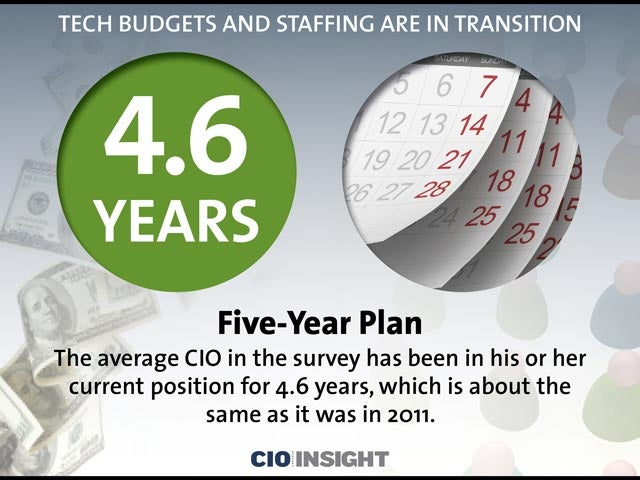 Five-Year Plan
Five-Year Plan
The average CIO in the survey has been in his or her current position for 4.6 years, which is about the same as it was in 2011.
 Chain of Command
Chain of Command
40% of CIOs report to the company COO, and 27% report to the CEO. Another 22% report to the CFO.
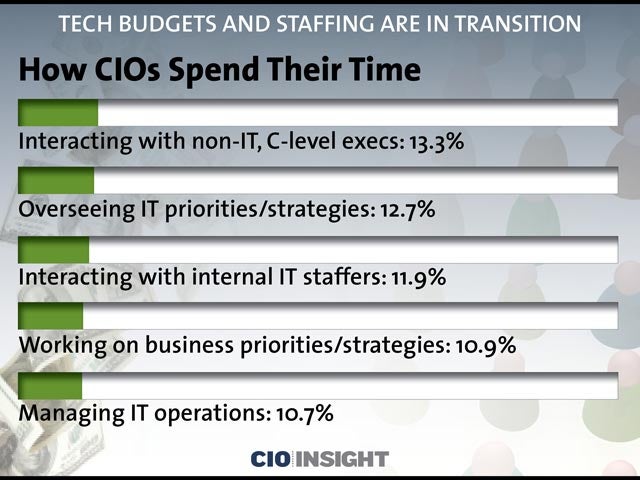 How CIOs Spend Their Time
How CIOs Spend Their Time
Interacting with non-IT, C-level execs: 13.3%, Overseeing IT priorities/strategies: 12.7%, Interacting with internal IT staffers: 11.9%, Working on business priorities/strategies: 10.9%, Managing IT operations: 10.7%
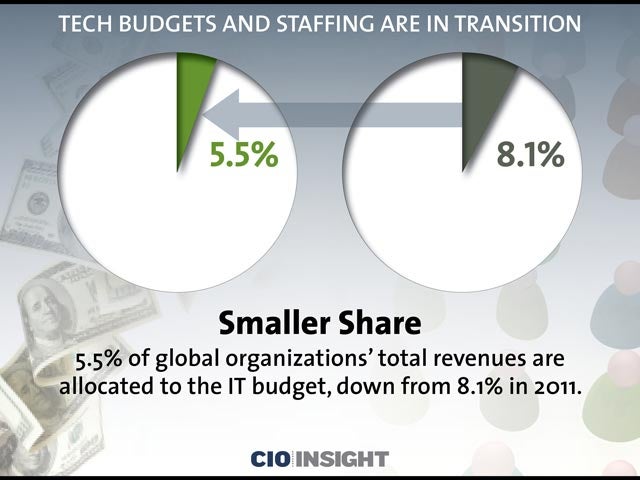 Smaller Share
Smaller Share
5.5% of global organizations’ total revenues are allocated to the IT budget, down from 8.1% in 2011.
 Net Gain
Net Gain
45% of CIOs and other tech execs anticipate that the IT budget will increase in 2015, compared with 25% who expect a decrease.
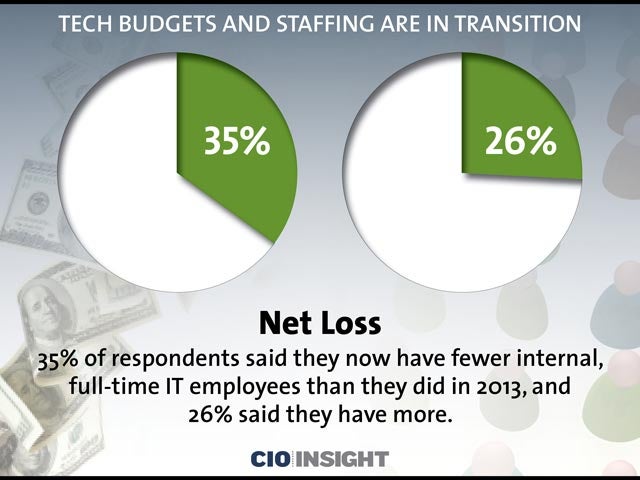 Net Loss
Net Loss
35% of respondents said they now have fewer internal, full-time IT employees than they did in 2013, and 26% said they have more.
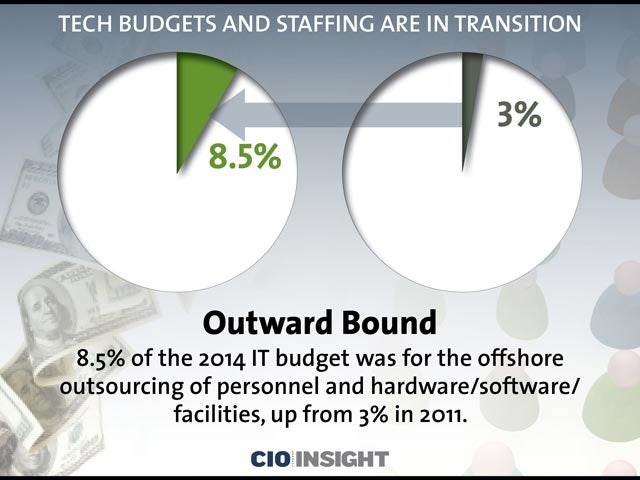 Outward Bound
Outward Bound
8.5% of the 2014 IT budget was for the offshore outsourcing of personnel and hardware/software/facilities, up from 3% in 2011.
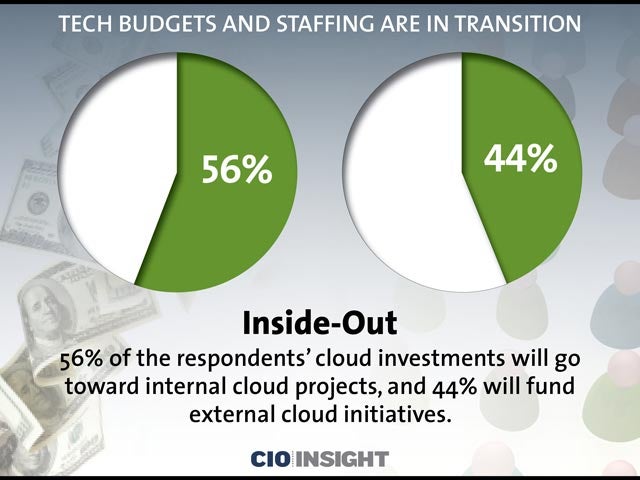 Inside-Out
Inside-Out
56% of the respondents’ cloud investments will go toward internal cloud projects, and 44% will fund external cloud initiatives.
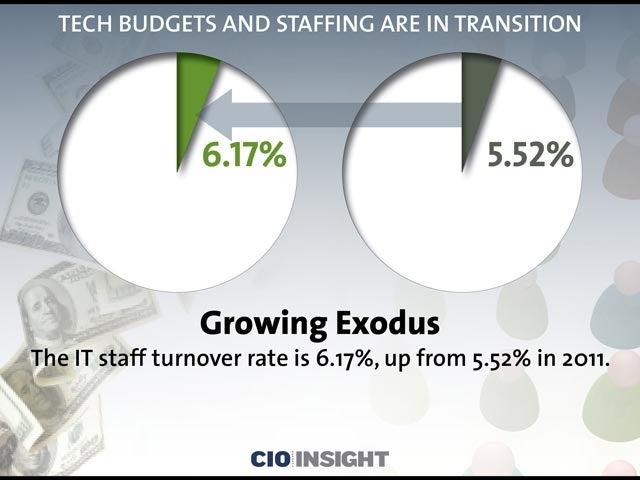 Growing Exodus
Growing Exodus
The IT staff turnover rate is 6.17%, up from 5.52% in 2011.
 School’s Out
School’s Out
3.23% of the respondents’ total IT budget is set aside for education and training, down from 7.92% in 2011.